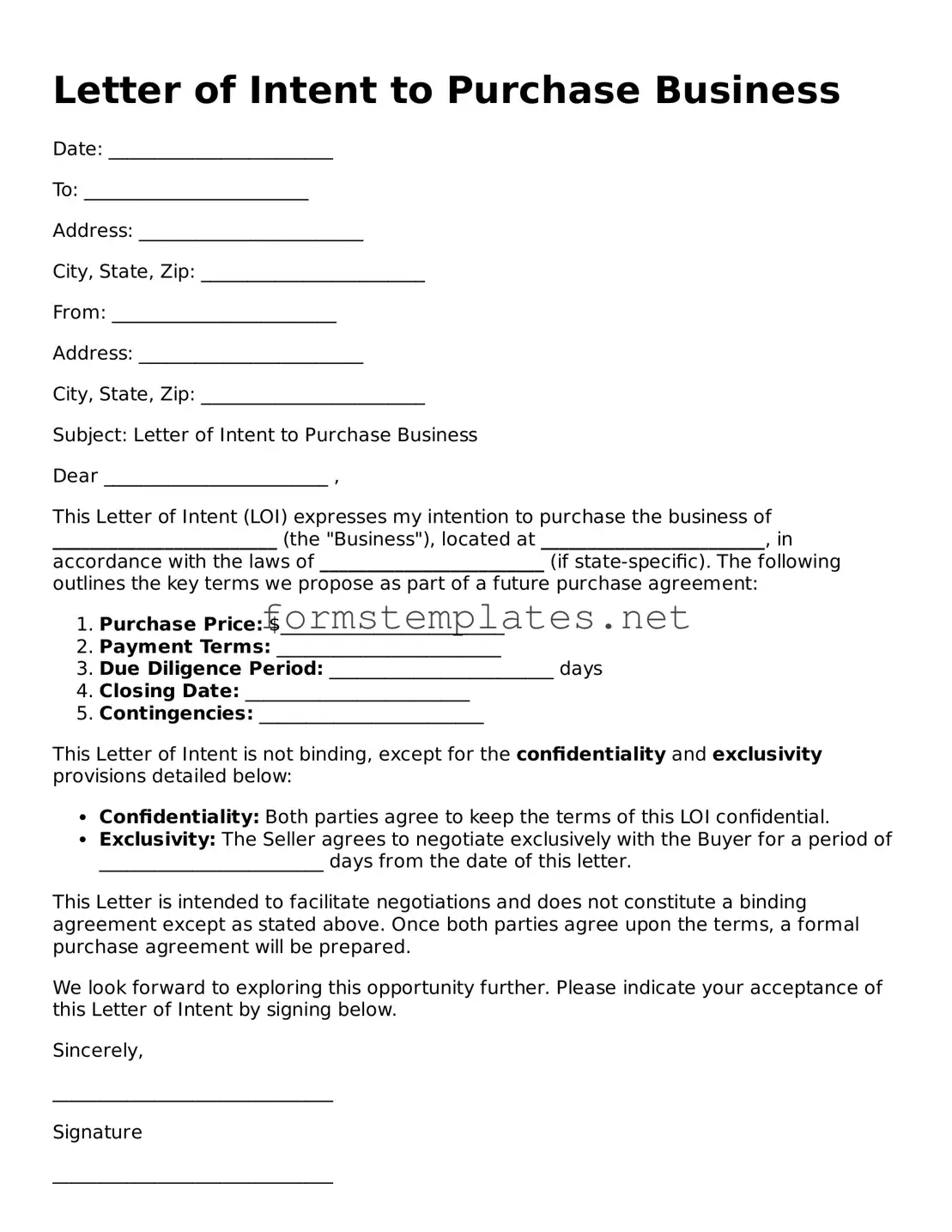Letter of Intent to Purchase Business
Date: ________________________
To: ________________________
Address: ________________________
City, State, Zip: ________________________
From: ________________________
Address: ________________________
City, State, Zip: ________________________
Subject: Letter of Intent to Purchase Business
Dear ________________________ ,
This Letter of Intent (LOI) expresses my intention to purchase the business of ________________________ (the "Business"), located at ________________________, in accordance with the laws of ________________________ (if state-specific). The following outlines the key terms we propose as part of a future purchase agreement:
- Purchase Price: $________________________
- Payment Terms: ________________________
- Due Diligence Period: ________________________ days
- Closing Date: ________________________
- Contingencies: ________________________
This Letter of Intent is not binding, except for the confidentiality and exclusivity provisions detailed below:
- Confidentiality: Both parties agree to keep the terms of this LOI confidential.
- Exclusivity: The Seller agrees to negotiate exclusively with the Buyer for a period of ________________________ days from the date of this letter.
This Letter is intended to facilitate negotiations and does not constitute a binding agreement except as stated above. Once both parties agree upon the terms, a formal purchase agreement will be prepared.
We look forward to exploring this opportunity further. Please indicate your acceptance of this Letter of Intent by signing below.
Sincerely,
______________________________
Signature
______________________________
Printed Name
______________________________
Date
Accepted by:
______________________________
Signature
______________________________
Printed Name
______________________________
Date
